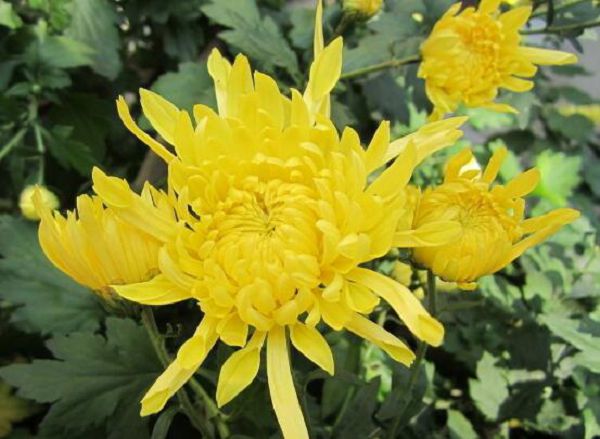What are the temperature requirements for flowers?

The growth, development and dormancy of all kinds of flowers require a certain temperature, and the temperature is too high or too low. Different kinds of flowers have different temperature requirements due to the different climate of their origin. In winter, like high-temperature flowers, if the temperature is lower than the origin, there will be cold injury or freeze to death; like low-temperature flowers, if the winter temperature is too high, can not fully dormancy and empty consumption of nutrients, it will affect the growth and flowering of the next year. For the convenience of cultivation, it is usually divided into three categories according to the temperature requirements of common flowers.
1, like high temperature flowers: poinsettia, cyclamen, bougainvillea and most epiphytic orchids, etc., require a room temperature of 20: 22 ℃ during the day and no less than 10 ℃ at night.
2. Low-temperature overwintering flowers: generally, the Yangtze River Basin can survive the winter in the open field, such as rose, sweet-scented osmanthus, citrus, camellia, cymbidium, cymbidium, rhododendron, gardenia, cycad and so on. Indoor planting in the north, the overwintering temperature is not lower than Omuri 5 ℃.
3. Medium-temperature flowers: between the first two types, they can spend the winter in open fields in Guangdong and Guangxi, such as Magnolia, jasmine, Milan, Fusang, most cactus, begonia, cyclamen, paulownia, balsam flower and so on. For planting in the north, the lowest indoor temperature in winter should not be lower than 7: 10 ℃, and it is best to keep it at about 18 ℃. In addition, the same flower has different requirements for temperature at different stages of growth and development. generally, the temperature requirement for seed germination is not high, but in order to improve the seed germination rate and cultivate robust seedlings, it is usually necessary to maintain a high temperature after sowing. If it is in the environment of low temperature and too wet soil for a long time after sowing, it will sprout slowly and mildew easily. For flowers native to tropical and subtropical regions, sowing and cutting seedlings should be more than 25 ℃. If the temperature is too low, the growth is obviously inhibited. Flowers originating in the plateau and the Mediterranean, such as dahlias, inverted golden bells, cyclamen, and all kinds of primroses, like to be cool during their growth and do not adapt to hot and humid conditions. In summer, the golden bell, primroses and cyclamen stop growing and go dormant.
Most greenhouse flowers have higher flowering temperatures, such as jasmine and white orchids, which bloom only in the hot summer, and the room temperature should be raised to above 28cC in winter. Phalaenopsis, cyclamen and other greenhouse flowers, after buying home, the flowers are getting smaller and smaller, or the buds cannot be opened, all because the temperature at home is too low. However, there are many exceptions in flowers, such as Mulan and Hanlan blooming during the Spring Festival; most varieties of azaleas and camellias bloom in the cooler spring. In addition, most flowers are very sensitive to low temperature during flowering, and a short period of low temperature may cause a large number of bud damage.
The temperature of dormant bulbs, bulbs and bulbs, such as Tripterygium, Begonia, Taro, calla, tulip, cyclamen and hydrangea lilies, should not be too high. These kinds of flowers need to complete dormancy and bulb development under low temperature conditions, and can reduce the nutrient consumption during storage.
- Prev

Why are the branches and leaves of potted flowers wilting?
Why are the branches and leaves of potted flowers wilting?
- Next

Which plants bloom in autumn? take an inventory of ten kinds of flowers that bloom in autumn.
Which plants bloom in autumn? take an inventory of ten kinds of flowers that bloom in autumn.
Related
- What if the leaves of potted flowers turn yellow?
- Florescence Control of several Flowers
- Anti-freezing technology and post-freezing nursing technology of flowers
- What is the classification of flowers? What are the common methods of flower classification?
- Prevention and control of alkali and acid damage of flowers in courtyard
- Technology of Anti-freezing and restoring growth of Flower seedlings in greenhouse and greenhouse
- How does flower fertilization not hurt the root? Fertilization technology of flowers
- Key points of disinfection in flower greenhouse
- Several pesticides that are banned or used cautiously in flowers
- How to fertilize the flowers that watch the leaves?

